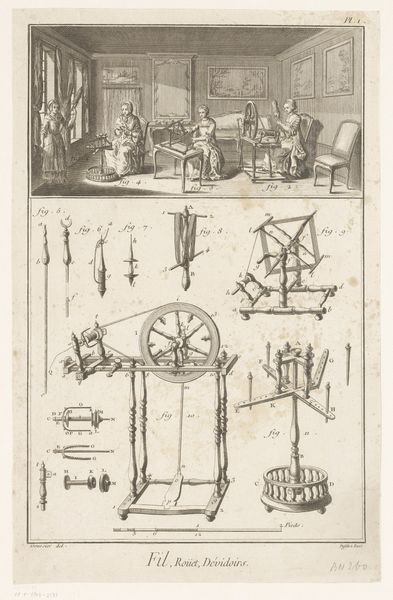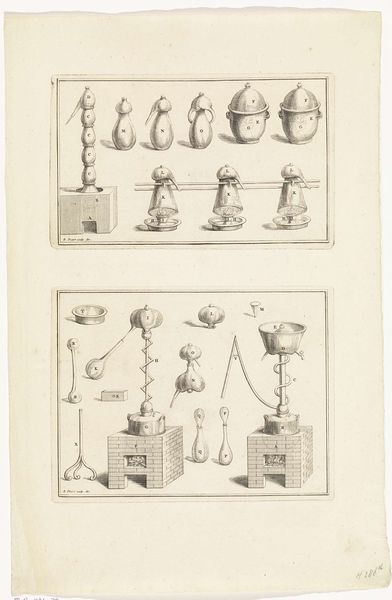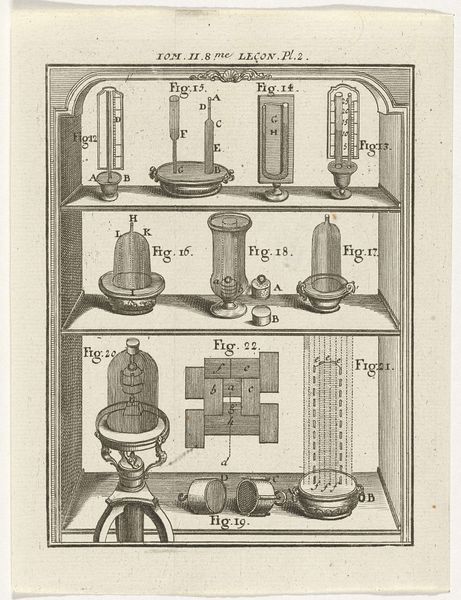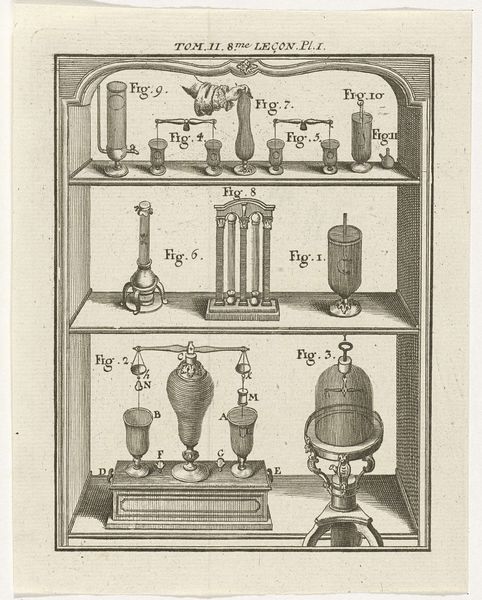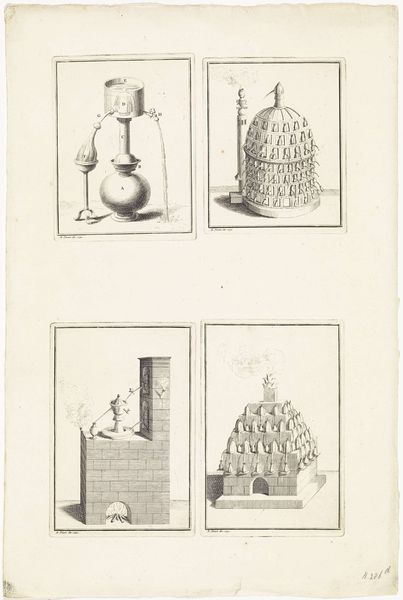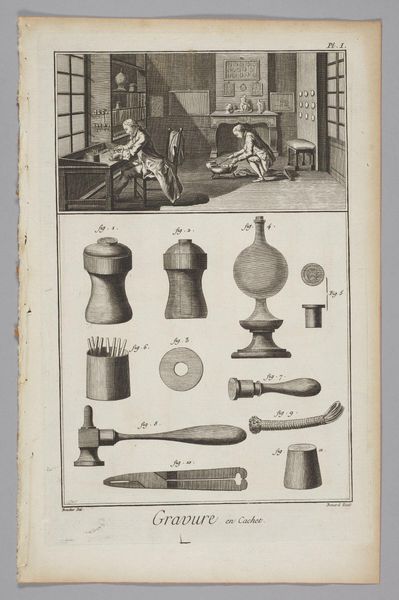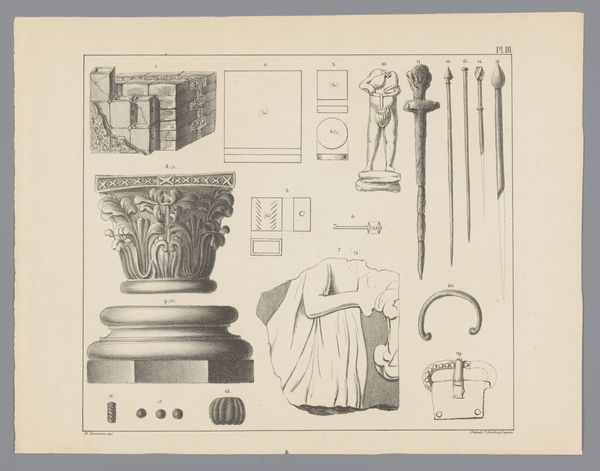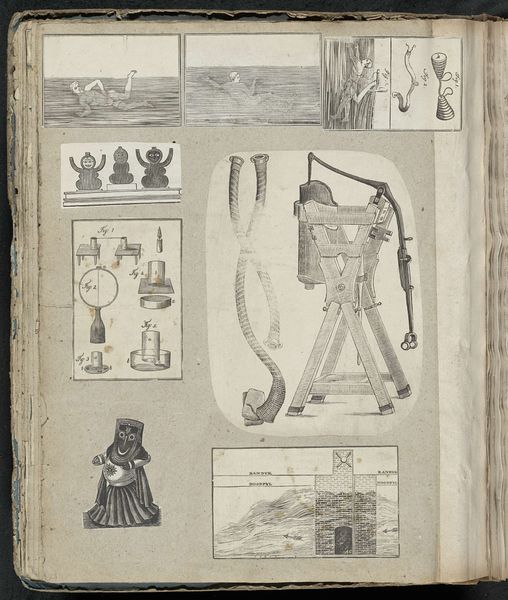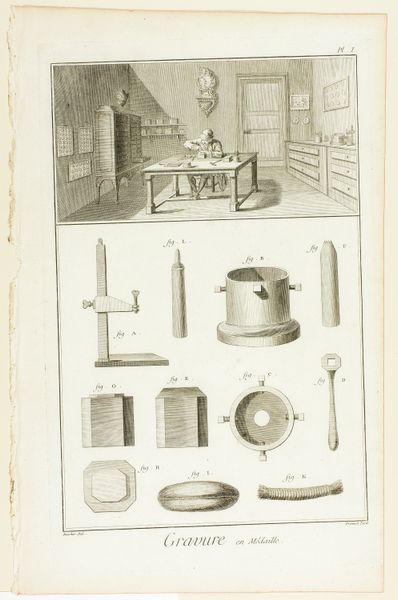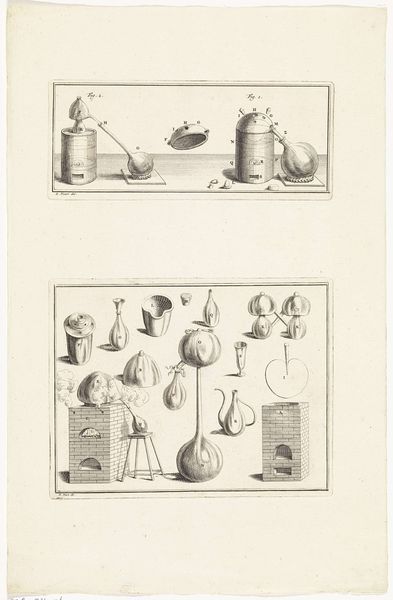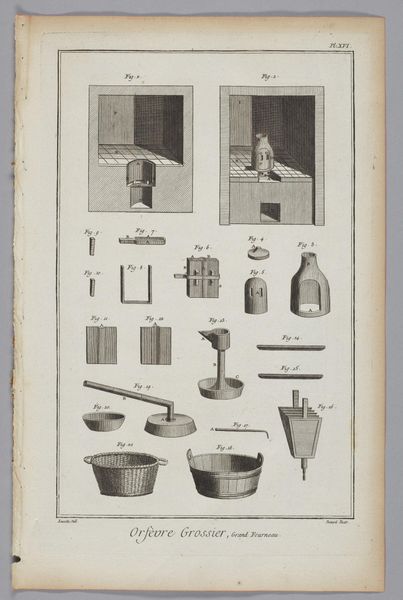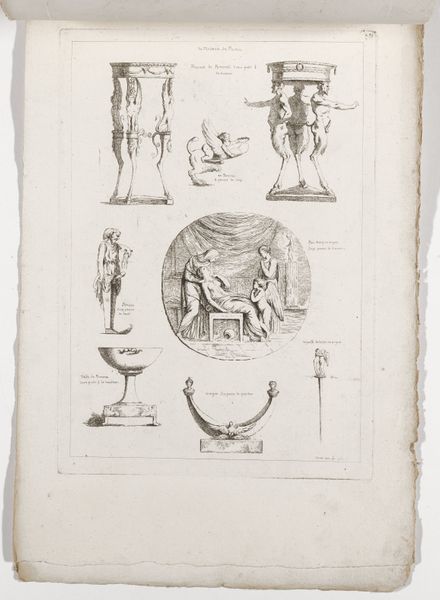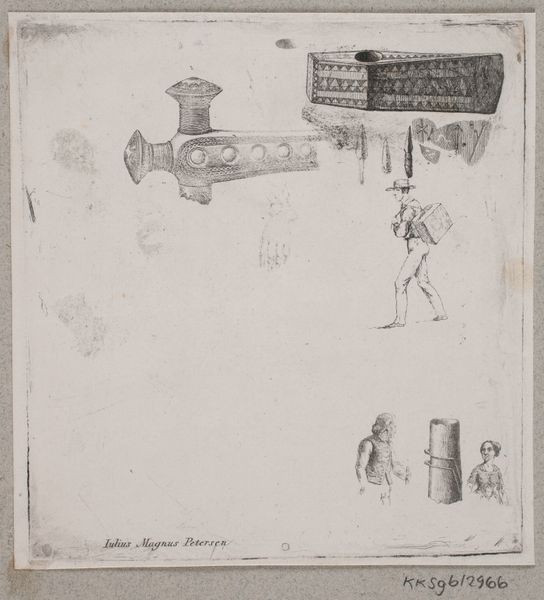
drawing, print, engraving
#
drawing
#
narrative illustration
# print
#
pen illustration
#
old engraving style
#
figuration
#
line
#
history-painting
#
engraving
Dimensions: height 141 mm, width 91 mm
Copyright: Rijks Museum: Open Domain
Curator: This engraving, "Oudheden van het Huis te Britten" attributed to Antoni Zürcher, presents an array of historical objects. The artist meticulously documented these artifacts, dating from 1765 to 1837, now housed at the Rijksmuseum. Editor: It feels a bit like an inventory or a catalog page. What’s striking to me is how disparate the objects are— keys, statues, pottery shards – yet they're all rendered in this very precise, almost scientific style. What do you see in this collection? Curator: Well, let's think about the means of production here. This is an engraving, a print. It implies a process of reproduction, of disseminating information. This isn't about the aura of a unique artwork; it’s about the *accessibility* of these historical remnants to a wider public. Editor: So, it's less about aesthetic appreciation and more about the distribution of knowledge? Curator: Exactly. We should ask: Who was this intended for? What social function did this kind of illustrated catalog serve? Perhaps to legitimize historical narratives or reinforce national identity through material culture? Consider also the labor involved – the engraver's skill, the paper-making process. Each element contributes to our understanding. The inclusion of the map is also telling – a way of situating these objects geographically. Editor: It sounds like you're saying that this print isn't just about the objects depicted but the entire system that allowed for its creation and circulation. The making is as important as the objects themselves. Curator: Precisely! And think about how these objects themselves – keys, containers – speak to everyday life, to labor and utility, even in the past. What story do these materials tell about the lives lived amongst them? What’s striking is the variety, reflecting how our society values items that provide tangible ties to our understanding of what matters across history and culture. Editor: That’s a fascinating way to look at it. It really opens up a new perspective, thinking about the work that went into both the original objects and this record of them.
Comments
No comments
Be the first to comment and join the conversation on the ultimate creative platform.
